Abstract
The population of India is rapidly increasing and hence there is a dire need for robust cities that can cater to such needs. The article aims at understanding the need for smart cities in the Indian context, the scope of which is limited to a participatory planning lens and how it is tied together with other socio-cultural and ecological forces. It is crucial to recognise the importance of this process due to the rapid growth of urbanization which impacts billions of citizens, whose lifestyles are deeply influenced by such missions. The article would help in understanding the parameters that are required to carefully assess the bottom-up approach for and beyond the planning regime, as a way-forward towards creating a ‘public city’. The article would focus on understanding the developments of four smart cities: New Town-Kolkata, Varanasi, and Amravati. The chosen smart cities have unique evolution pattern, geographical constraints, cultural values, social practices, vision, and ecology. The key idea is to draw attention to the significant impact smart cities can have through social urbanism and public inclusivity. The analysis reveals that in the quest to make the Indian cities ‘smart’ the government has not been able to cater to the social fabric of the city as an immediate response to its citizens. Though they have been able to build a stronger infrastructure to support the everyday activities in the city.
The premise of the article focuses on decoding the various inclusions made by the development authorities for the smart city plan. It highlights how the cities are being planned without a cohesive approach to achieving inclusivity and liveability for its users. These underlying vulnerabilities make it important to dig deeper into the planning regime and explore the voids in their framework.
“Although the ‘smart city’ concept has emerged from long-persisting ideas about urban technological utopias and the perfectly competitive city, it also differs from these urban visions in some important ways.” (Glasmeier and Christopherson, 2015)
Related Articles:
- Smart city concept by MoUD, Government of India
- Indian smart cities: A distinct approach
- Appraisal of UIDSSMT: A case study of Pathsala Town, Assam
- How Cities Are Getting Smart Using Artificial Intelligence
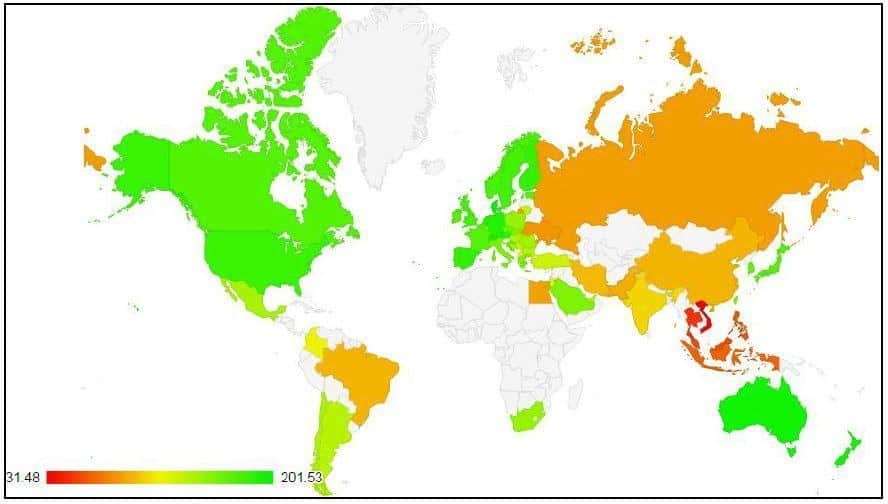
Figure 1. Quality of Life Index, Countries in green colour indicate better quality of life offered to their citizens. Source: Numbeo, 2016
An equitable approach would be beneficial in such a scenario by being particular about what to include in the plan. It is imperative that the cities need to respond to the needs of the people and the solutions should be sustainable with time. The citizens would then feel empowered with these considerations and the urban as well as the social fabric of the city would transform for the larger good. The Smart city mission should efficiently utilize the potential of the city and build on the existing fabric to preserve its values rather than juxtaposing an alienated concept which may cause significant damage to the city.
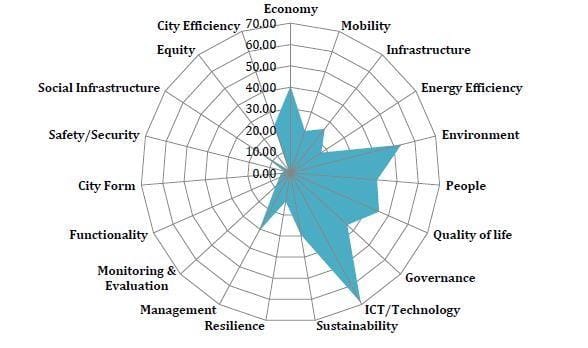
Figure 2. Definitions of Smart City in Literature as a Combination of Various Aspects. Source: CSTEP Analysis
The cities, being an integral part of the system, have been evolving through these phases and the 21st-century population has been a major challenge for the cities to tackle. Though theoretically the quality of life of people has been defined substantially, there has to be the effective on-ground implementation of these parameters along with the combination of other various aspects. The rapid growth of urbanization has led to the government identifying cities that need a major transformation for the betterment of its citizens and its smooth functioning. Three such cities are discussed below.
New town-Kolkata- a satellite town aiming to decongest the core city
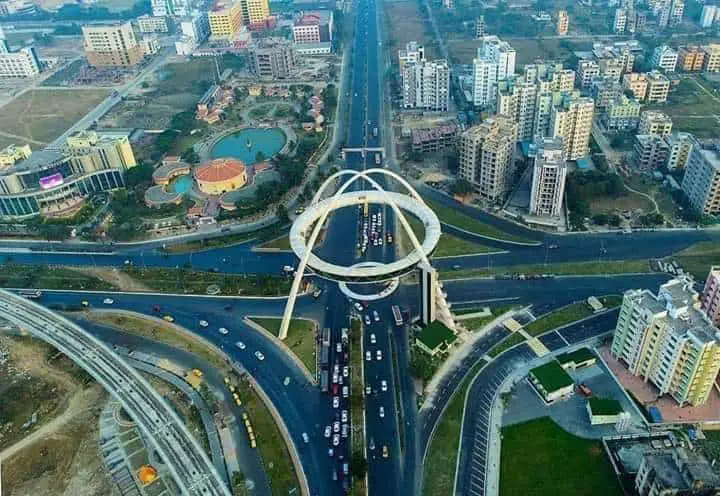
Figure 3. A view of New-Town, Kolkata.
Located in the north-eastern fringes of Kolkata, New Town is a planned newly developed satellite city. It was initiated in 2009 under the New Town Kolkata Development Authority (NKDA) Act to be built as a service hub. The amenities provided catered to a large variety of user groups including the children and elderly of the society. Though connectivity and placement of such amenities is still a question at large for the newly developed city. There have been efforts made to analyze the functioning of provisions and inputs had been taken from key stakeholders. Despite such a process being in place, there has been a very little reflection of the concerns that were raised. The spaces are not conveniently accessible and thus remain under-utilized. The green-field project has caused significant ecological damage by choking the pervious soft ground.
Related Articles:
- How IoT Can Improve Smart City Infrastructure
- Retrospective View of Smart Cities Mission
- Smart City Infrastructure Planning
- Smart city concept by MoUD, Government of India
Varanasi- the ancient city countering the fabrication of its heritage
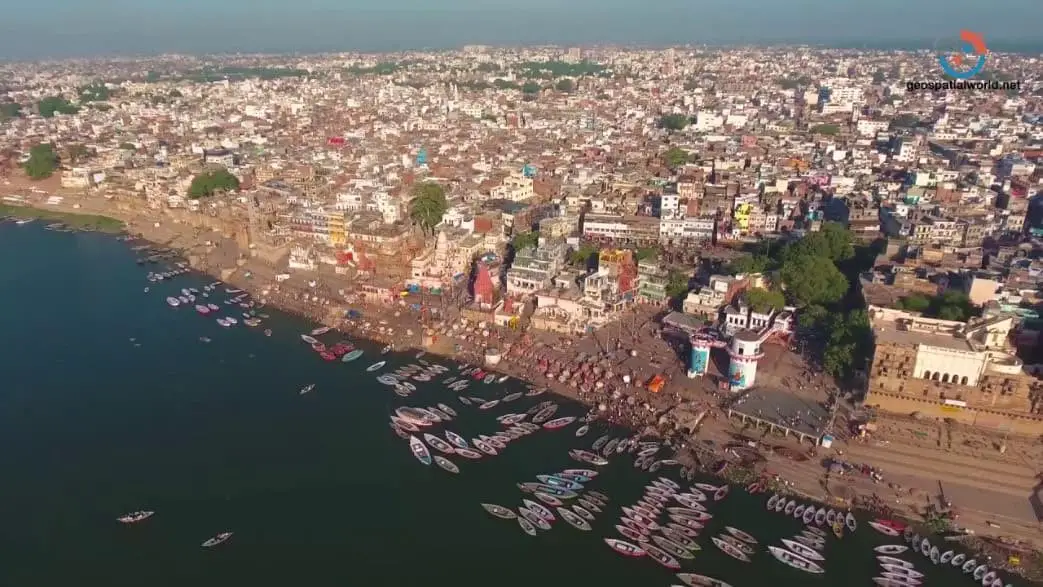
Figure 4. A view of Varanasi city
The city which originated long back in 1200 BC, Varanasi is one of the oldest cities in the world. The city is situated along the ghats of river Ganga, famous for its unique cultural traditions, spiritual importance and heritage values. The city attracts millions of tourists during the time of festivals and the city chokes due to lack of adequate facilities to absorb such a huge mass. It is challenging for the government to deal with a large chunk of floating population in tandem with the existing dense population. The efforts are made by the government to resolve the pilgrimage and tourist infrastructure which suppresses the needs of its own people. While it is important to cater to the needs of tourists but with an inclusive approach towards development, the government can be an equitable provider. It would be easier to network budget hotels, homestays, etc. which can help the local residents generate economy and also aid the government in their mission.
Amravati- cracking the equation between religious practices and ecology
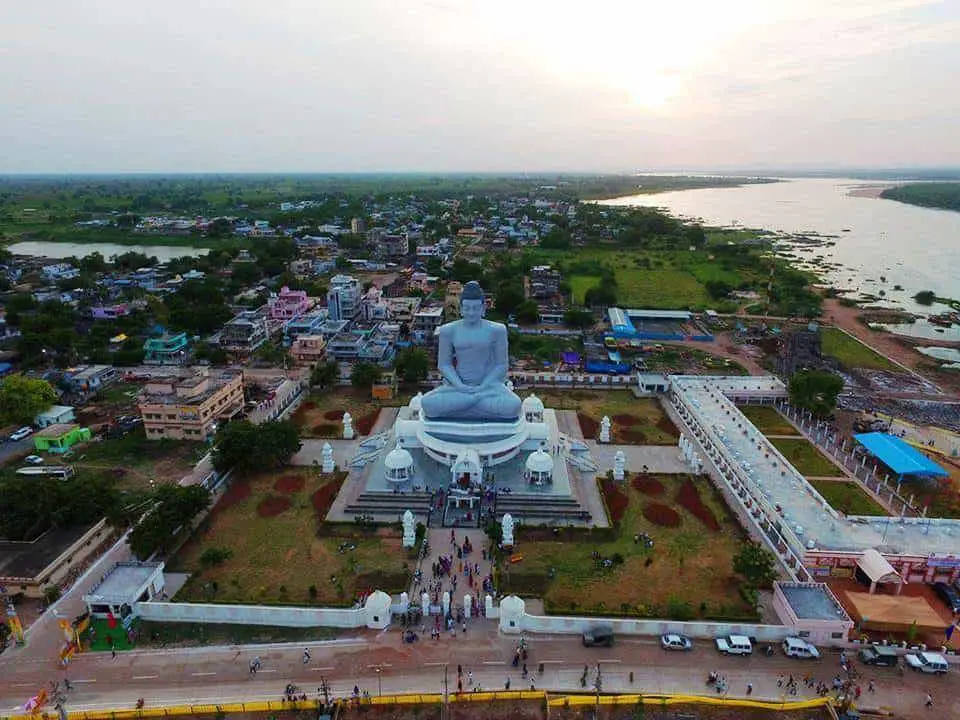
Figure 5. A view of Amravati city.
With a high standard of life and a literacy rate of 93%, Amravati is a potential industrial, educational and tourism hub. The idea was to decongest the core of the city through this greenfield development. The economic development was to be driven by the smart city to contribute towards the state economy. There has been equitable emphasis laid on the provisions which are distributed across the city and networked together. The city is in the process of building a stronger network of public transportation which would resolve the issue of access for its citizens. The adequate analysis makes the city more inclusive in nature and it was achieved through a systematic planning approach. The city has been continually increasing its efficiency and has paved the way for improvising its services with time. This approach further balances the system and also helps in reducing the damage that could be caused to society and ecology.
Conclusion
The prime focus on making the city smart was majorly influenced by the virtue of monetization and lacked public inclusivity. The cohesive approach applied in the case of Amravati has helped in building a city that is smarter in connectivity, activity and enhanced public approach. This had been possible through taking into consideration the various layers that make the society i.e. social, cultural, ecological aspects. The other two cities are striving to manifest the idea of an inclusive smart city due to a lack of composite planning. Though the article is limited towards a participatory lens, it would also be important to study the various tangible and intangible constraints of the city and its surroundings. This would benefit in building a robust development plan which addresses the issues in accordance with the limitations and potentials.
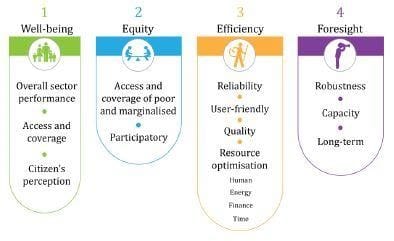
Figure 6. Guiding Principles for the Smart City reference Framework.. Source: CSTEP Analysis
Planners in contemporary India have very little idea about how the emerging images of the city would connect. He also highlights that there is a lack of an understandable language of connections between the various parts created by them. (Mehrotra, 2001, p. 109)
The smart cities should ideally be flexible for their citizens to adapt. The citizen participation is the key ladder for the mission should also not be limited in any form of access. There should be adequate facilities to be made in local or regional languages which invite ideas and suggestions from the citizens. This would also help in building strong local area plans which the ULBs can manage and monitor. There could be alternative sources to pool-in feedback and data through online portals. This also helps in making the forum more inclusive and available for all. Citizens in need and with different abilities should also be included as part of their participatory process. The need for the hour should be to have an adaptive plan laid out which can evolve with time according to the emerging needs.
Author Bio: Arnav is an urban enthusiast, currently in his final year of undergraduate studies pursuing Urban Design from CEPT University, Ahmedabad. He is keen to explore the human-centric design approach which can help in improvising the rural-urban scenario.
Bibliography:
- Glasmeier, A. and Christopherson, S. (2015). Thinking About Smart Cities. Oxford University Press on behalf of the Cambridge Political Economy Society.
- Aijaz, R. (2016). Challenge of Making Smart Cities in India. Asie Visions, No.87, Ifri.
- Numbeo, (2016). Quality of Life Index for Country. Available from:
- Ministry of Urban Development, (2015). Smart Cities-Mission Statement & Guidelines. New Delhi: Government of India.
- Ministry of Urban Development, (2015). Indian Smart City Mission- Mission Transform-Nation, Smart City Code: WB-01-KOL. New Delhi: Government of India.
- Ministry of Urban Development, (2015). Indian Smart City Mission- Mission Transform-Nation, Smart City Code: ML-01-SLG. New Delhi: Government of India.
- Ministry of Urban Development, (2015). Indian Smart City Mission- Mission Transform-Nation, Smart City Code: UP-09-VNS. New Delhi: Government of India.
- Amravati Municipal Corporation, (2015). Smart Cities Challenge. AMC: Government of Maharashtra.
- Bhattacharya, S., and Rathi, S. (2015). Reconceptualising Smart Cities: A Reference Framework for India, (CSTEP-Report-2015-03).
- Pal, P (2001). Reflection on Arts of India, Published by Marg Pubns.
- Fig3. A view of New-Town-Kolkata. Retrieved from: https://teja10.kuikr.com/restatic/uploads/2019/05/New-town-1.png
- Fig4. A view of Varanasi city. Retrieved from: https://i.ytimg.com/vi/3JDuN6pN1IQ/maxresdefault.jpg
- Fig5. A view of Amravati city. Retrieved from: